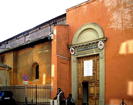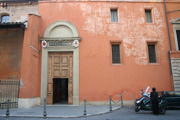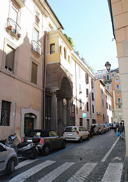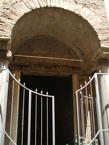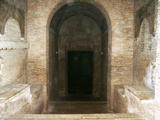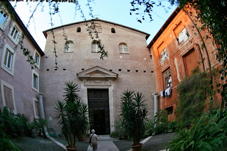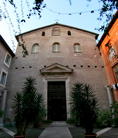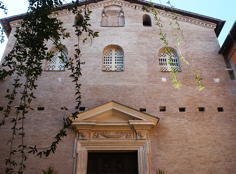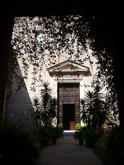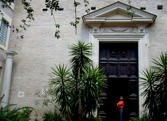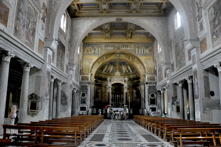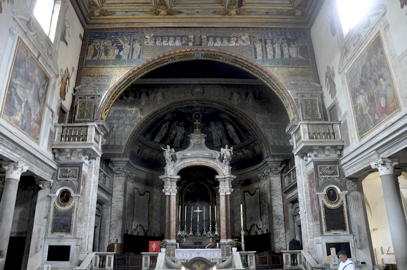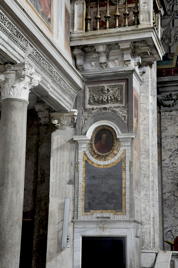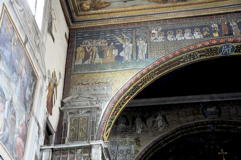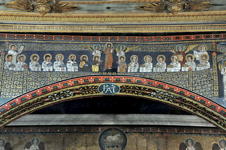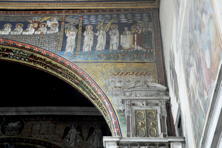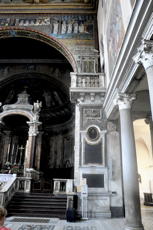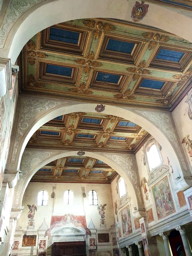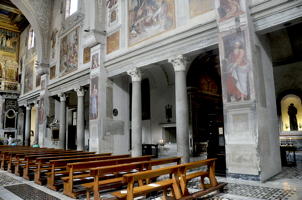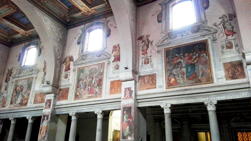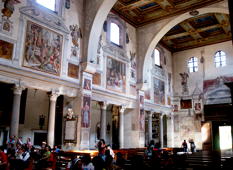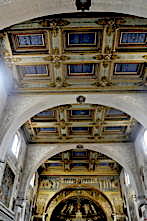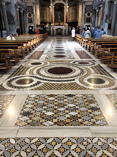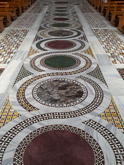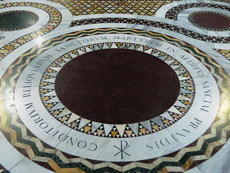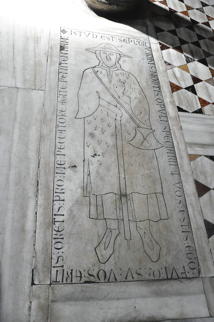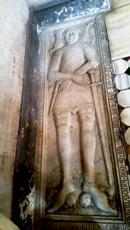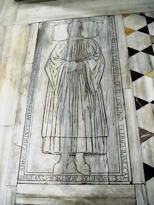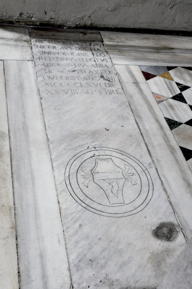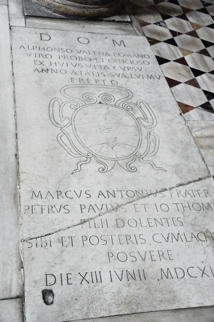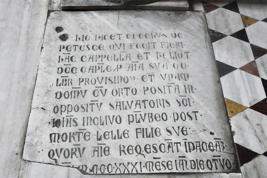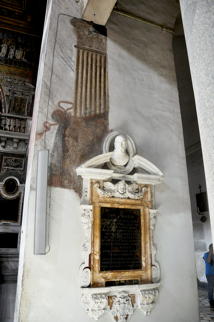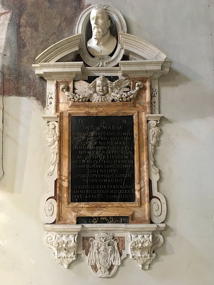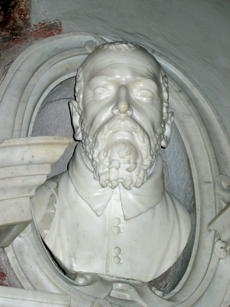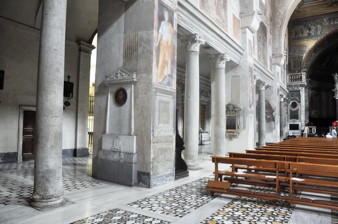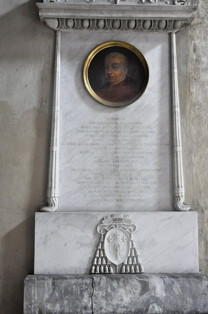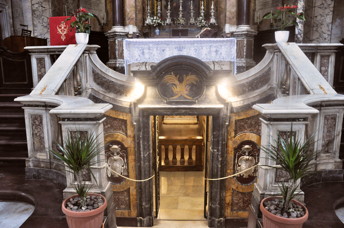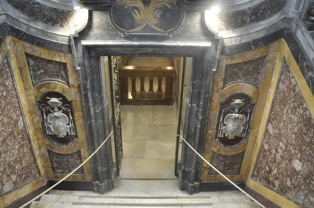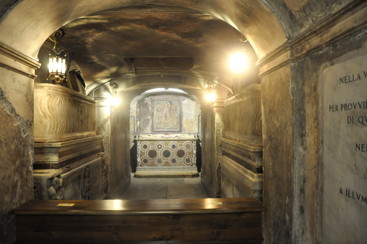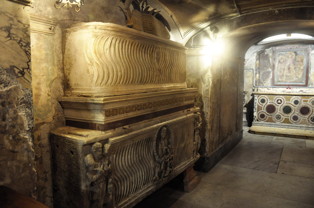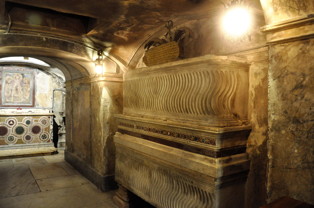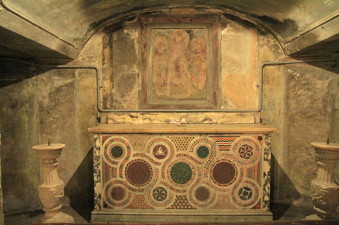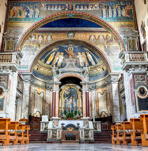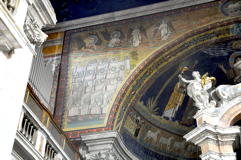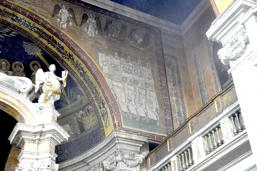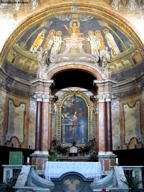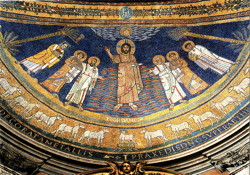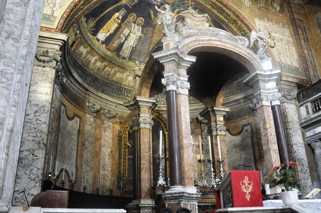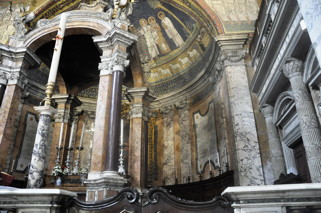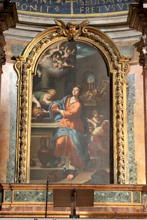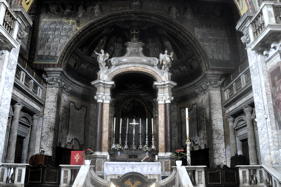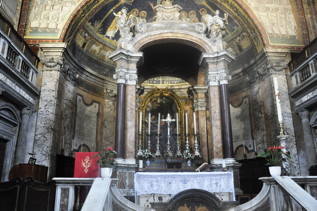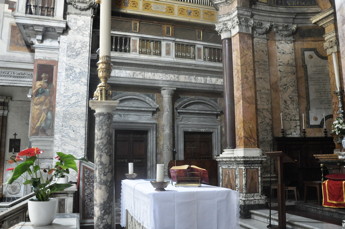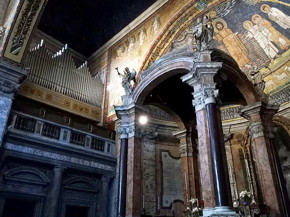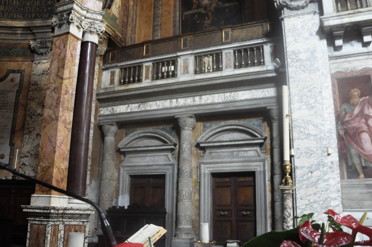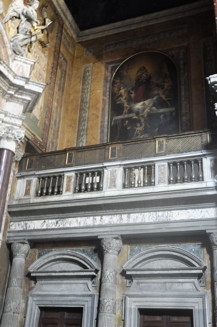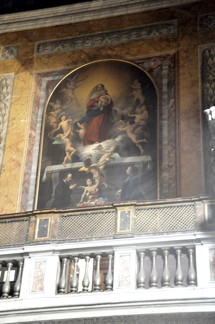Santa Prassede is a a 9th century minor basilica located near the major basilica of Santa Maria Maggiore in the rione Esquilino. The dedication is to St Praxedes.
For reference, a plan of the church is available
here.
Pope St Paschal I (817-24) built the present church on a terrace levelled on a slope of the Esquiline Hill in the year that he was elected. The mosaics commissioned for this church by Pope Paschal are deservedly famous. It is Pascale who orchestrated the last great translation of the relics of martyrs from the cemeteries outside of the walls of Rome. He also moved the body of Pope Celestino I from the Catacombs of Priscilla to Santa Prassede. Part of the function of the new church was to serve as a repository for relics of martyrs from the catacombs. The church was given another function by the pope; he attached the unique funerary chapel of St Zeno to the right hand side wall, to serve as a memorial for his mother.
In 1564 St Charles Borromeo, the saintly archbishop of Milan, was made the titular. After his appointment he appointed
Martino Longhi the Elder as architect for his interventions in the church, which were under way in 1575. Ten years after this, Cardinal Alessandro de' Medici became titular cardinal here (1594-1600) and commissioned the complete decoration of the central nave, with the stories of the Passion, from a group of late mannerist painters. In 1605 he was elected as Pope Leo XI.
The next major intervention was by Ludovico Cardinal Pico della Mirandola, who became titular cardinal in 1728. This involved the complete re-designing of the sanctuary and confessio. The architect was
Francesco Ferrari. The nave was provided with a coffered wooden ceiling in 1868, using wood and timber from the private forest of the Abbey of Vallombrosa.
In the 20th century, work was done on the basilica by Antonio Muñoz. In 1918, he replaced the 17th century brick and marble slab flooring with the present spectacular floor in the Cosmatesque style. He restored the façade in 1937. There was another unfortunate restoration between 1969 and 1973, when fresco work on the counterfaçade and on the intradoses of the transverse nave arches was replaced with whitewash.
Robert Browning wrote a poem about “
The Bishop Orders His Tomb at Saint Praxed’s Church”
